RESEARCH GROUP
The VIP Lab research group consists of professionals that combine experience in vision science, color science, image processing, psychophysics, and mathematical modeling.

Samuel Morillas
Prof. Samuel Morillas has a BSc in Computer Science from Unvieridad de Granada and a PhD in Applied Mathematics from Universitat Politècnica de València (UPV) in Spain. From 2019 he is a full professor of the Applied Math department at UPV, where he is a member of the Instituto of Pure and Applied Math.
His undergraduate teaching includes fundamental algebra and calculus for first-year students and Continuous modeling for the 3rd year students of the Data Science degree. His graduate teaching at UPV concerns fuzzy logic and applications. He has also been an invited professor in a series of Universities: University of Granada (Spain), Rochester Institute of Technology (NY, USA), Chonbuk National University (South Korea), University at Buffalo (NY, USA), Colorado University at Boulder (Co, USA), Harvard University (Massachusetts, USA), University of Edinburgh (UK) and Metropolia University of Applied Sciences (Finland), where he has taught different courses and seminars about fuzzy logic, image processing, and image appearance models.
His research has been focused on fuzzy logic and fuzzy metrics both in the theoretical field and, mostly, in their applications. He has developed different solutions based on fuzzy logic and fuzzy metrics for problems in different fields including image processing, color science, and pavement engineering. He has published more than 50 papers in scientific journals and presented more than 70 contributions to scientific conferences.

Cristina Jordán Lluch
Cristina Jordán earned a BS degree in Mathematics from the Universitat de Valencia, Spain, in 1981, followed by a Ph.D. in Applied Mathematics from the Universitat Politècnica de València (UPV), Spain, in 1997. She has been associated with the Department of Applied Mathematics at the UPV since its establishment and is a member of the Institute of Multidisciplinary Mathematics (IMM).
Her research career commenced with a focus on Matrix Analysis during her PhD, particularly in Partial Matrix Completion Theory and Totally Positive matrices. While initially intrigued by Graph Theory, she explored its various applications, eventually delving into the realm of computer vision. Currently, she integrates her research in this field with the study of iterative methods for solving equations and non-linear systems in numerical computation. She has authored over 33 papers in scientific journals and presented more than 35 contributions at scientific conferences. She has also served as the director for 4 doctoral theses, 2 master theses, and supervised numerous final degree theses.
Passionate about promoting active learning in higher education, particularly in the field of Graph Theory, she has authored several books with international publishers on this subject. Additionally, she has developed two MOOC courses on edX and an OCW course, the latter of which received an international award.
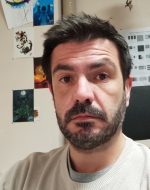
Luis Gómez Robledo
Prof. Luis Gómez Robledo has a BSc in Physics and a Bachelor’s degree in Optics and Optometry from Universidad de Granada. In 2011 he received his PhD in Physics from Universidad de Granada.
From 2009 he has been teaching undergraduate students in Chemstry degree, Physics degree and Optometry degree. His teaching in 14 different subjects has been related with physics, physiology and vision. He has been also teaching since 2009 in two different masters COSI (“Color in Science and Industry” master Erasmus Mundus) and MOCOA (“Master en Optometria Clinica y Optica Avanzada”, national master). He has been director of 1 Thesis and 5 Master Thesis.
His research has been related on color differences formulas, color measurement, food colour and colour perception. At the moment his interests are focused con colorblindness vision and perception. To date he has published 27 scientific papers. He has 1 patent and 3 registered algorithm all of them related with food industry.
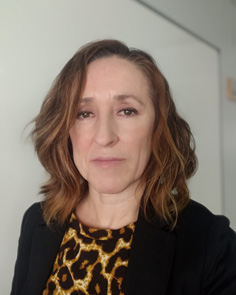
María José Pérez Peñalver
Ms Perez Peñalver obtained a Degree in Mathematics (Universitat de València, Spain) in 1993 and a PhD in Applied Mathematics (Universitat Politècnica de València, Spain) in 1999. She has been a part of the Department of Applied Mathematics at the Universitat Politècnica de València (Spain) since 1995, is a member of the research group IEMA (Innovation in Assessment for Enhanced Active Learning), and has been a member of IUMPA (Instituto Universitario de Matemática Pura y Aplicada), where she has been involved in projects financed by European, national and regional government funds.
She has also been technical editor of the journal Applied General Topology. Her main research areas are non-symmetric topology, assessment and active learning in higher education, and visual image processing. She has published papers in conference proceedings and journals in related areas since 1996.
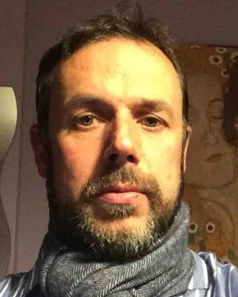
Rafael Huertas
Rafael Huertas is an Associate Professor at the Department of Optics of the University of Granada from 2011. He has taught different courses in the degrees of Physics and Optics and Optometry and in in different masters, nationals, and internationals (Erasmus Mundus), specifically “Basic Colorimetry”, “Applied Advanced Colorimetry”, “Advanced Color Image Processing”. He has been director of 2 doctoral thesis, and several Master Thesis, Summer Research Projects, End-of-Degree Projects, etc.
His research interests include basic and applied colorimetry: color-difference formulas, color spaces, color vision deficiencies, color in images, texture, and food color. He has participated in 16 research projects, as lead researcher in 3 of them. He has been a member of different CIE Technical Committees. To date, he has published 46 scientific papers in international journals with impact factor, 13 chapters of books, and 97 contributions to scientific conferences. He has participated in 1 patent.
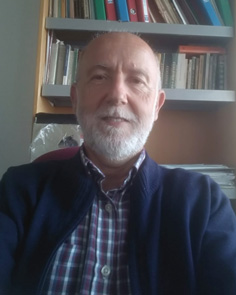
Valentín Gregori Gregori
Valentín Gregori received his BS degree in mathematics from the University of Valencia, Spain. He received his Ph.D. degree in mathematics in 1985. Since 2000 he has been a full professor in the Department of Applied Mathematics of Universitat Politécnica de València.
In his early years of research, he was dedicated to general topology. In the last 20 years, his main research interest has been in the field of fuzzy topology, especially in fuzzy metrics and their applications. He has published more than 80 papers in international journals. Dr. Gregori is an associated editor of the international journal Applied General Topology.
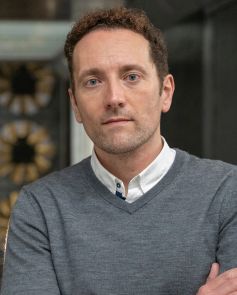
Sergio García-Nieto
Sergio García-Nieto is an associate professor of the Systems Engineering and Automatics Department at the Universitat Politècnica de València and a member of the Institute of Automatics and Industrial Informatics.
He received his BSc (2004) and PhD (2010) degrees in control and automation from Universitat Politècnica de València. Since 2007, he has been an associate professor at the Systems Engineering and Control Department at UPV.
Since 2009, his research has focused on developing control algorithms and artificial intelligence for Unmanned Aerial Vehicles (UAVs). He has published more than 30 research articles in high-impact journals and more than 50 contributions to international and national conferences. His stays in International reference centres such as the Fluidmechanik und Prozessautomation Institut at the University of Munich or the Aerospace Department at the University of Texas are also relevant.
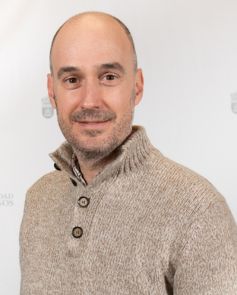
Pedro Latorre Carmona
Pedro Latorre Carmona received a BSc in Physics (speciality in Optics) from the University of Valencia (UV; 1994-1999) and obtained the Diploma of Advanced Studies (DEA) from the University of Valencia (2002) in the photonics doctoral program of the Depts of Applied Physics and Optics. In 2005, he defended his Doctoral Thesis at the Polytechnic University of Valencia (UPV). From 2006 to 2019, he worked at the Jaume I University (UJI) in Castellon.
He has been an Assistant Professor Doctor in the Dept. of Computer Engineering, Area of Languages and Computer Systems, from the University of Burgos, from September 2019 until October 2021. Since October 2021, he has been an associate Professor at the same university, department and area.
His main research areas are Image processing and computer vision, in particular, 3D image processing colour and grey scale image processing; and Pattern recognition.

Marius Pedersen
Marius Pedersen received his BSC in Computer Engineering in 2006, and MiT in Media Technology in 2007, both from Gjøvik University College, Norway. He completed a Ph.D. program in color imaging in 2011 from the University of Oslo, Norway, sponsored by Océ.
He is a professor at the Department of Computer Science at NTNU in Gjøvik, Norway. He is currently the deputy head of the computer science department and director of the Norwegian Colour and Visual Computing Laboratory (Colourlab).
His work is centered on subjective and objective image quality. He has published more than 150 peer-reviewed journal and conference papers, where the majority is linked to image quality assessment.
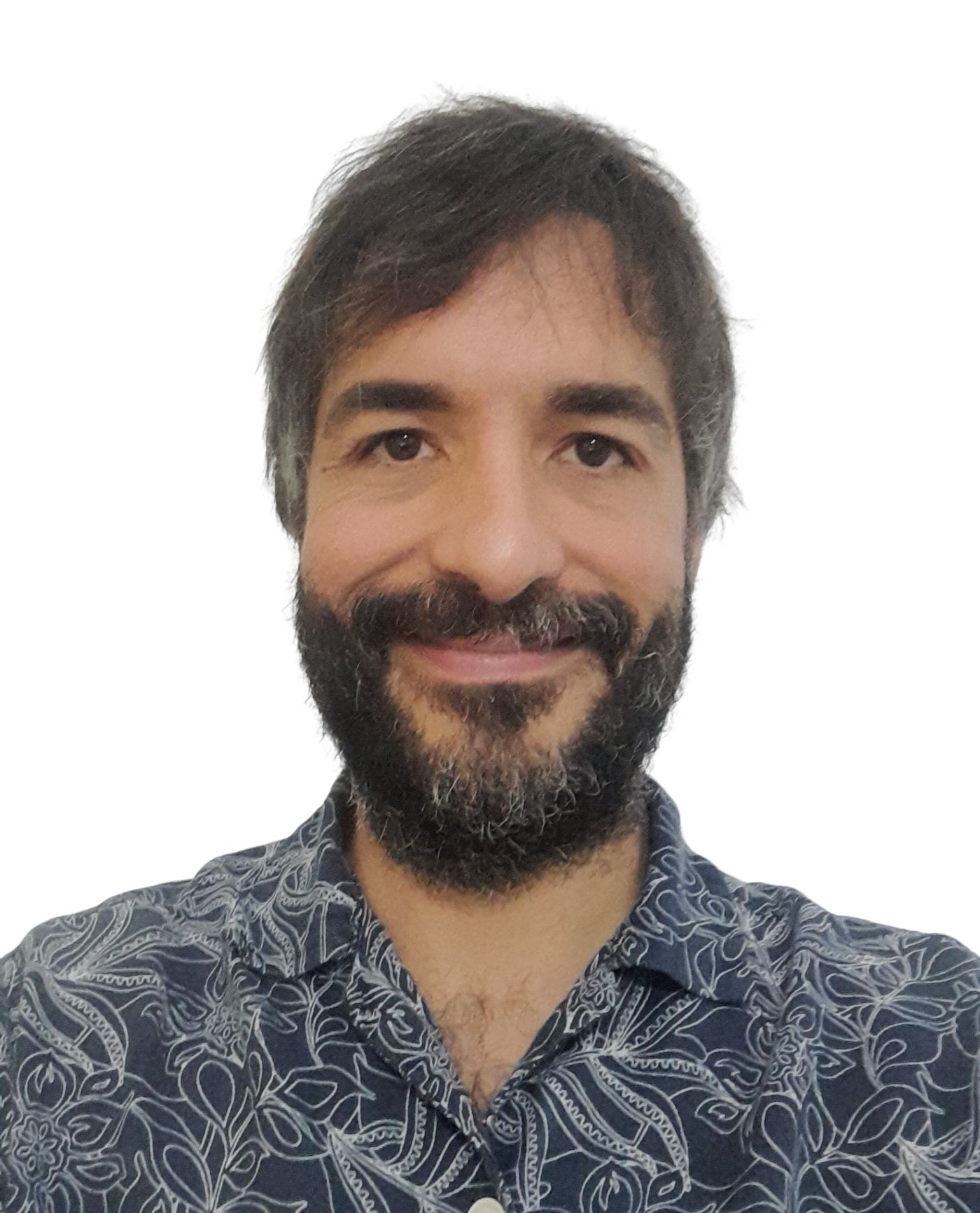
Juan José Miñana Prats
Juan José Miñana Prats obtained his BS degree in mathematics from the University of Valencia and received a PhD in Mathematics in 2015 from Universitat Politècnica de València (UPV), Spain. He started his academic career in April 2012 with a research fellowship provided by Generalitat Valenciana (UPV, 2012-2015), he worked as a Lecturer at the Universidad Internacional de la Rioja (2016), and as a professor at the Universitat de les Illes Balears (2016-2023). Currently, he is an Assistant Professor in Departamento de Matemática Aplicada of the UPV.
His research interests are focused on General Topology and its applications to Computer Science. Concretely, he is interested in the topological analysis of generalized metrics and their applications in engineering problems such as perceptual color difference, multi-agent systems, model estimation, clustering, image filtering, and fuzzy metrics.
He has published 44 research papers in indexed journals in the most prestigious database, he has participated in 13 international congresses as a speaker and he has taken part in autonomic, national and international research projects.
COLLABORATORS
José Camacho

José Camacho is an associate professor in the Department of Signal Theory, Networking and Communications and researcher in the Information and Communication Technologies Research Centre, CITIC for its initials in Spanish, at the University of Granada, Spain. His research interests include exploratory data analysis, anomaly detection, and optimization with multivariate techniques applied to complex data of very different nature, mainly in molecular biology, analytical chemistry, and communication networks. He specializes in extracting knowledge from (Big) data and the design of new algorithms to do so.
KNOW MORE
Mark D. Fairchild

Mark D. Fairchild is Professor and Founding Head of the Integrated Sciences Academy in RIT’s College of Science and Director of the Program of Color Science and Munsell Color Science Laboratory. He received his B.S. and M.S. degrees in Imaging Science from R.I.T. and Ph.D. in Vision Science from the University of Rochester. He is a Fellow of the Society for Imaging Science and Technology (IS&T) and the Optical Society of America (OSA).
KNOW MORE
Miguel Ángel García Pérez
Miguel Ángel García Pérez received his Ph.D. in psychology in 1987 from Universidad Complutense de Madrid, where he is currently a Professor of Methodology at the Department of Psychology. He spent leaves of absence at Virginia Tech and at The Schepens Eye Research Institute (Harvard Medical School), where he is a Visiting Scholar since 2001. His main research interest lies in developing and validating probabilistic models of the sensory, decision, and response processes underlying psychophysical performance. Applications range from visual contrast perception to the perception of temporal duration or intersensory synchrony, and they are accompanied by the development of suitable psychophysical methods for data collection and statistical methods for data analysis and parameter estimation. His contributions have been published in journals such as Attention, Perception, & Psychophysics, or Behavior Research Methods. Other areas of interest and active research include the development of scientometric tools for the assessment of research outcomes and the comparative status of null hypothesis significance testing and its Bayesian alternatives. Prof. García Pérez served as an Editorial Board member for The British Journal of Mathematical and Statistical Psychology (2002-2007) and is now a Consulting Editor for the Journal of Mathematical Psychology.
KNOW MORE
Jesús Malo

Jesus Malo has a Ph.D. in Physics from the Universitat de Valencia (1999). He was a postdoc at the NASA Vision Group with AB. Watson (in 2000-2001) and at the Center for Neural Science NYU with E. Simoncelli
in 2001. He has more than 50 research papers on the intersection between Human Vision and Statistical Learning. He has been visiting researcher at Stanford and NYU in 2013, Associate Editor of the IEEE Trans. Image Processing, PLOS, and Front. Neuroscience. He has been on the board of NeurIPS, ICLR, ICML, and IEEE ICIP. Currently, he is a Full Professor on Vision Science at the Faculty of Physics of the Universitat de Valencia, where he leads the visual neuroscience team of the Image and Signal Processing Group (http://isp.uv.es)
KNOW MORE
Rafal Manktiuk
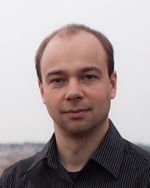
Rafał K. Mantiuk is a Reader (Associate Professor) at the Department of Computer Science and Technology, University of Cambridge (UK). He received Ph.D. from the Max-Planck Institute for Computer Science (Germany). His recent interests focus on computational displays, novel display technologies, rendering and imaging algorithms that adapt to human visual performance and viewing conditions to deliver the best images given limited resources, such as computation time, bandwidth, or dynamic range. He contributed to early work on high dynamic range imaging, including quality metrics (HDR-VDP), video compression, and tone-mapping.
KNOW MORE
Juan Luis Nieves

Prof. Juan Luis Nieves is a Full Professor at the University of Granada (Spain) specialized in Color, Color Vision, Computational Color, and Spectral Imaging. He is the author of more than 60 JCR publications (h-index 16; i10-index 23), 10 book chapters, and 80 conference presentations. He has been the principal investigator of 6 research projects and 3 international academic projects, managing more than 2 M€ research budgets. He has been President of the Spanish Color Committee for the last 3 years and is currently the coordinator of the Erasmus+ Joint Master Degree Computational Colour and Spectral Imaging COSI at the University of Granada. He has a strong experience supervising Ph.D. researchers and Master students enhancing their research career; currently, most of them are consolidated ER working in high-level Universities/Research centers and specialist in the fields of Color and Spectral Imaging.
KNOW MORE
Alejandro Párraga
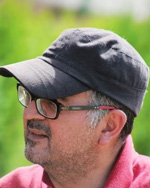
Alejandro Parraga is a researcher at the Computer Vision Centre and an Associate Professor at the Computer Science Department of the Universitat Autònoma de Barcelona. His first degree is in physics, but his MSc and Ph.D. were in visual perception at the Department of Experimental Psychology, University of Bristol, UK. His past and current research interests include natural images, color perception and colorimetry, camera calibration, neuro-visual ecology, low-level computational models of vision, visual psychophysics, experimental aesthetics, computer vision, and artificial intelligence.
KNOW MORE
Andrew Stockman

Andrew Stockman was an undergraduate at the University of Oxford, where he studied Experimental Psychology in his second and third years, after which he became a Ph.D. student supervised by John Mollon at the Craik Laboratory at the University of Cambridge, where his thesis was on human color vision.
In 2001, he was appointed the Steers Professor of Investigative Eye Research at the UCL Institute of Ophthalmology and has been an Honorary Consultant of Moorfields Eye Hospital since 2004. Here, he continued his basic (non-clinical) research, and have broadened his remit to include clinical research. He runs a small and successful laboratory called the Colour & Vision Research Laboratories within the UCL Institute of Ophthalmology. He's the theme leader of Visual Neuroscience and Psychophysics at the Institute of Ophthalmology and a member of VSS, ARVO, OSA, ICVS, AVA, and the Colour Group.
He's particularly proud of a website for the use of the vision community: "Colour and Vision Research Laboratories Database". It contains data sets and other information relevant to vision research (http://www.cvrl.org)
KNOW MORE
Jesús Alcalá Fernández
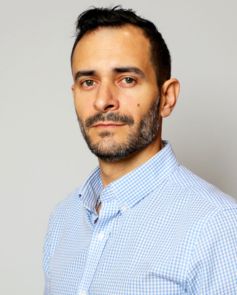
Jesus Alcalá-Fdez received the degree of engineer and PhD in computer science from the University of Granada (UGR) in 2002 and 2006 respectively, receiving the Extraordinary PhD Award in Technical Sciences from the UGR in 2014.
He is a professor at the Department of Computer Science and Artificial Intelligence (CCIA) of the UGR and member of the research group «Soft Computing and Intelligent Information Systems» (SCI2S, TIC-186), the Andalusian Interuniversity Institute in Data Science and Computational Intelligence (DaSCI), and the research center in Information and Communication Technologies (CITIC-UGR).
According to WoS, he has an H-index above 25 and his papers have received more than 4,900. In addition, he has been included in Stanford University’s «Ranking of the World Scientist: World’s Top 2% Scientists» published in the prestigious journal Plos Biology in the area of Artificial Intelligence and Image Processing since 2020. His current research topics include: Artificial Intelligence, Machine Learning, Big Data, Bioinformatics, eXplainable/Trustworthy Artificial Intelligence, Software for Computational Intelligence, Association Rules, Evolutionary Fuzzy Systems, Evolutionary Multiobjective Algorithms.
KNOW MORE
Reza Ghasemi

Dr. Reza Ghasemi, born in 1983, is an Assistant Professor of Statistics at Payame Noor University in Iran. He obtained his PhD in 2020 with a specialization in Probability from Shahrood University of Technology. Dr. Ghasemi’s research interests include the use of statistical and fuzzy methods in image processing and noise reduction. Additionally, he conducts extensive research on the application of machine learning and deep learning techniques in data analysis and medical imaging.
To date, Dr. Ghasemi has published 13 scientific papers in reputable journals and presented over 30 papers at international conferences. He is very interested in contributing to advances in statistics, image processing, and medical data analysis through research and scientific endeavors.

